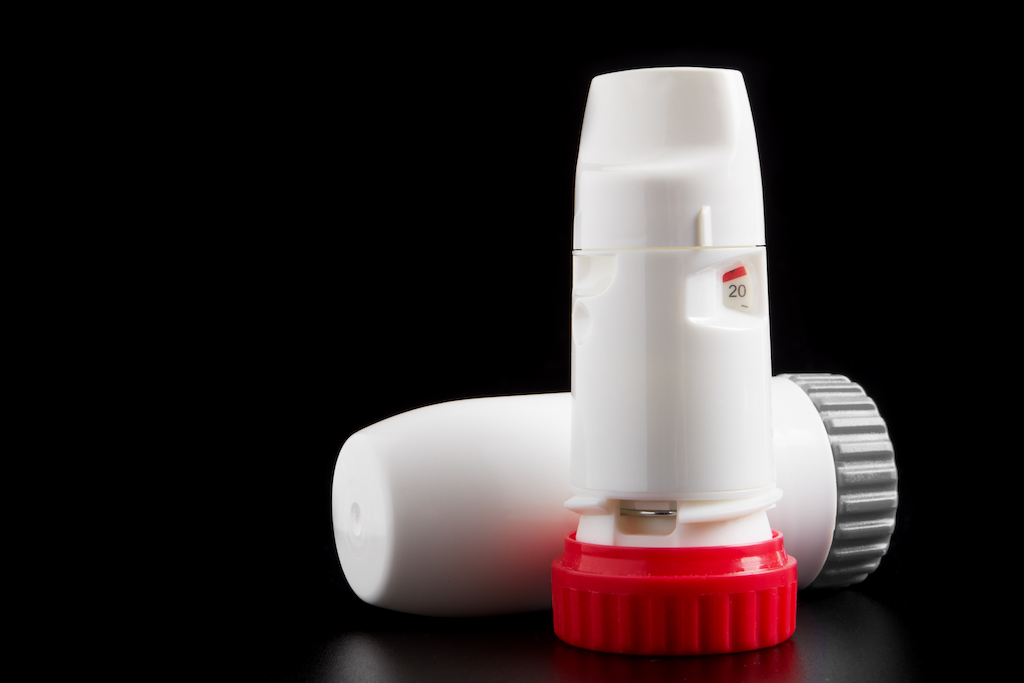Dry powder inhalers (DPIs) have become indispensable when it comes to the treatment of respiratory disorders such as asthma and chronic obstructive pulmonary disease (COPD). Established in approximately 1970, DPIs have come a long way with new advances in terms of device design. Currently, DPI devices are available in three different types:
- A unit-dose device in which patients load an individual dose in the form of a capsule or blister before use
- Multiple-unit devices contain several doses of the drug and are also provided with dose counters to let the patient know when to refill the prescription
- Reservoir systems contain a bulk amount of the drug from which a metered dose is inhaled by the patient when required
Irrespective of the device type, the basic principle of drug delivery through DPI remains the same. For the right amount of drug to reach the lungs, DPI must appropriately use the energy supplied by the patient to fluidise, deaggregate, dispense, and disperse the formulation contained within it. With a large number of DPIs in the market, a review of factors affecting their performance becomes essential.
Device-related factors
- Pressure drop and airflow resistance – Variation in designs of different DPI device elements leads to a difference in their airflow resistance (R), resulting in a proportional change in their pressure drop (ΔP) and flow rate (Q) characteristics.
√ΔP = Q X R….. (i)
As per equation (i), the highest inspiratory flow rate is achieved at zero resistance and the highest pressure-drop at infinite resistance. Thus, high-velocity airflow will be achieved within inhaler with high-pressure drop generating greater fine particulate fraction, and lower airflow would facilitate deep lung deposition. However, too high and low airflows lead to increased impaction losses and reduced powder disaggregation and dispersion, respectively. European Pharmacopoeia and the United States Pharmacopeia compendial procedures for assessing DPI drug delivery performance require that 4.0 L of air at a pressure drop of 4 kPa be drawn through the inhaler. - Capsule puncturing performance – Hard capsules have been used increasingly in DPI devices because of their multiple advantages. However, they need to pass certain criteria to ensure smooth drug delivery. To facilitate the release of powder during inspiration, the capsule shell must be punctured or cut using a blade. The size and shapes of the holes should be sharp, regular, and also should not shed pieces or create hindrances to powder flow, which is affected by moisture content and elasticity of the capsule used. Puncturing performance is determined by the puncture force and force-displacement profile while the puncturing element moves across the capsule wall at different relatives humidities. Force used to puncture HPMC and gelatin capsules is 2-3N and 8N, respectively.
- Fluid dynamics – Small modifications in inhaler design changes the airflow field generated within the device, significantly impacting its performance. Computational fluid dynamics, a relatively fast and inexpensive technique, is used for visualising the aerosol dynamics, including the airflow resistance, turbulence, fluid drag forces, particle trajectories, and impaction patterns within the complex geometry of the inhaler device.
Powder-related factors
Aerodynamic size of particles of 1–5 μm is usually required for inhalation delivery. For lung deposition, the device should ensure sufficient de-agglomeration of particles upon inhalation, which is impacted by the powder flowability. A balance between cohesive and adhesive forces, generated due to high surface energy of particles, suitable levels of moisture content, and physicochemical properties of the powder, ensure good flowability.
Patient-related factors
The patient’s inspiratory airflow may be affected by the patient’s airway and lung conditions. Thus, medium-resistance devices are preferred for compromised and flow limited patients. Incorrect handling of the device by patients may impact the device performance, which can be overcome by increased patient training.
Takeaway
There is no single, best DPI device for all patients, and the choice should be made only after a proper understanding of the device’s design, powder characteristics, and the patient’s condition to maximise DPI performance
References
-
Dal Negro RW. Dry powder inhalers and the right things to remember: a concept review. Multidisciplinary respiratory medicine. 2015 Dec 1;10(1):13.
-
Harris, D. (2015). The advantages of designing high-resistance swirl chambers for use in dry-powder inhalers. 10-13.
-
Buttini F, Brambilla G, Copelli D, Sisti V, Balducci AG, Bettini R, Pasquali I. Effect of flow rate on in vitro aerodynamic performance of NEXThaler® in comparison with Diskus® and
-
Turbohaler® dry powder inhalers. Journal of aerosol medicine and pulmonary drug delivery. 2016 Apr 1;29(2):167-78.
-
Birchall JC, Jones BE, Morrissey A, Jones BE. A comparison of the puncturing properties of gelatin and hypromellose capsules for use in dry powder inhalers. Drug development and industrial pharmacy. 2008 Jan 1;34(8):870-6.
-
Chong RH, Jones BE, Díez F, Birchall JC, Coulman SA. Evaluating the sensitivity, reproducibility, and flexibility of a method to test hard shell capsules intended for use in dry powder inhalers. International Journal of Pharmaceutics. 2016 Mar 16;500(1-2):316-25.
-
Suwandecha T, Wongpoowarak W, Srichana T. Computer-aided design of dry powder inhalers using computational fluid dynamics to assess performance. Pharmaceutical Development and Technology. 2016 Jan 2;21(1):54-60.
-
Moskal A, Sosnowski TR. Computational fluid dynamics (CFD) and direct visualization studies of aerosol release from two cyclohaler-type dry powder inhalers. Journal of drug delivery science and technology. 2012 Jan 1;22(2):161-5.
-
Peng T, Lin S, Niu B, Wang X, Huang Y, Zhang X, Li G, Pan X, Wu C. Influence of physical properties of carrier on the performance of dry powder inhalers. Acta Pharmaceutica Sinica B. 2016 Jul 1;6(4):308-18.
-
Aydemir Y. Assessment of the factors affecting the failure to use inhaler devices before and after training. Respiratory medicine. 2015 Apr 1;109(4):451-8.

